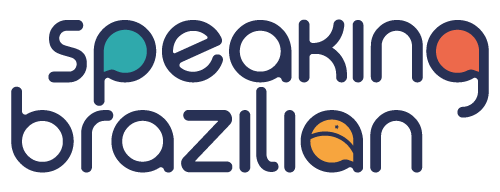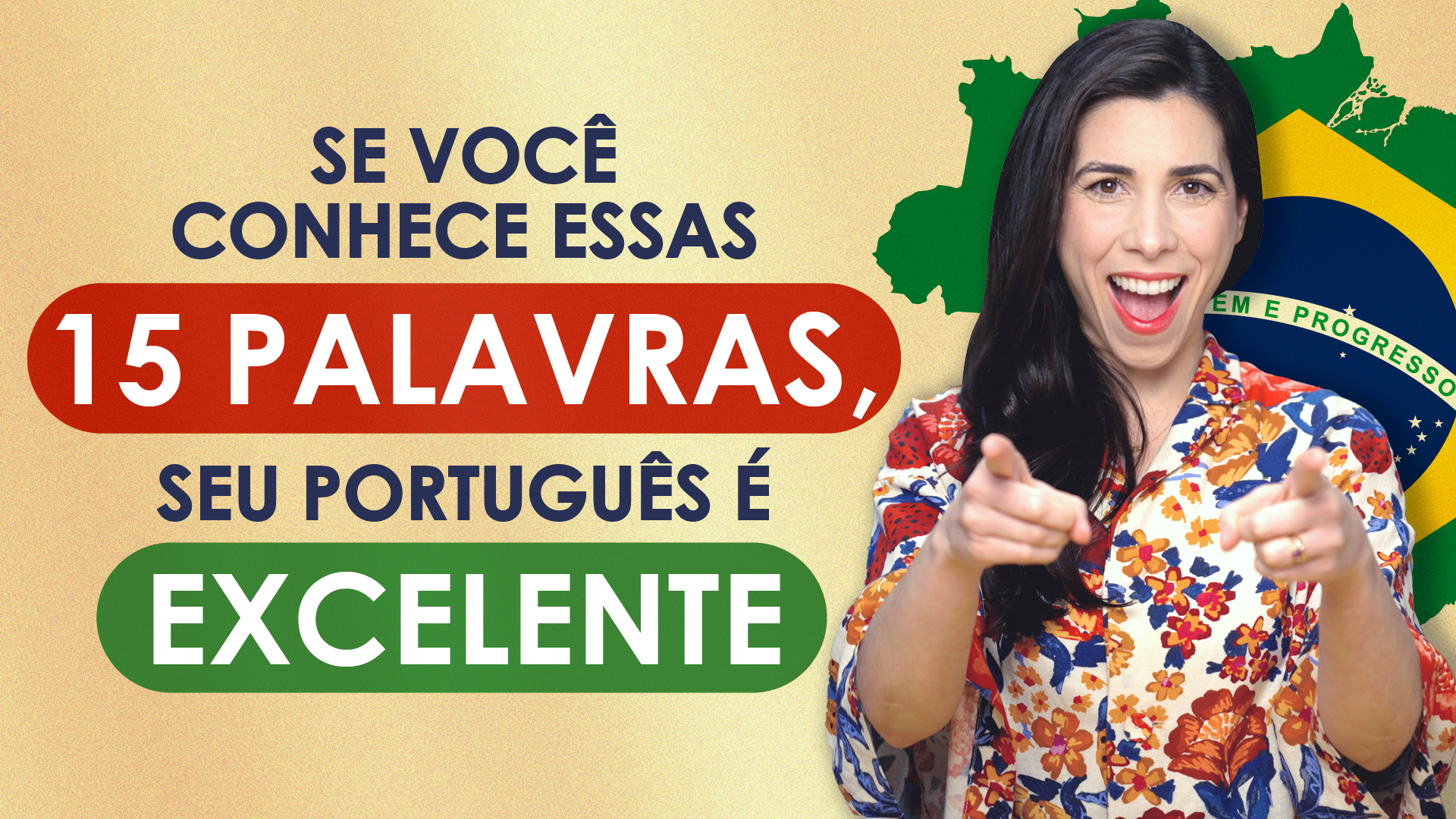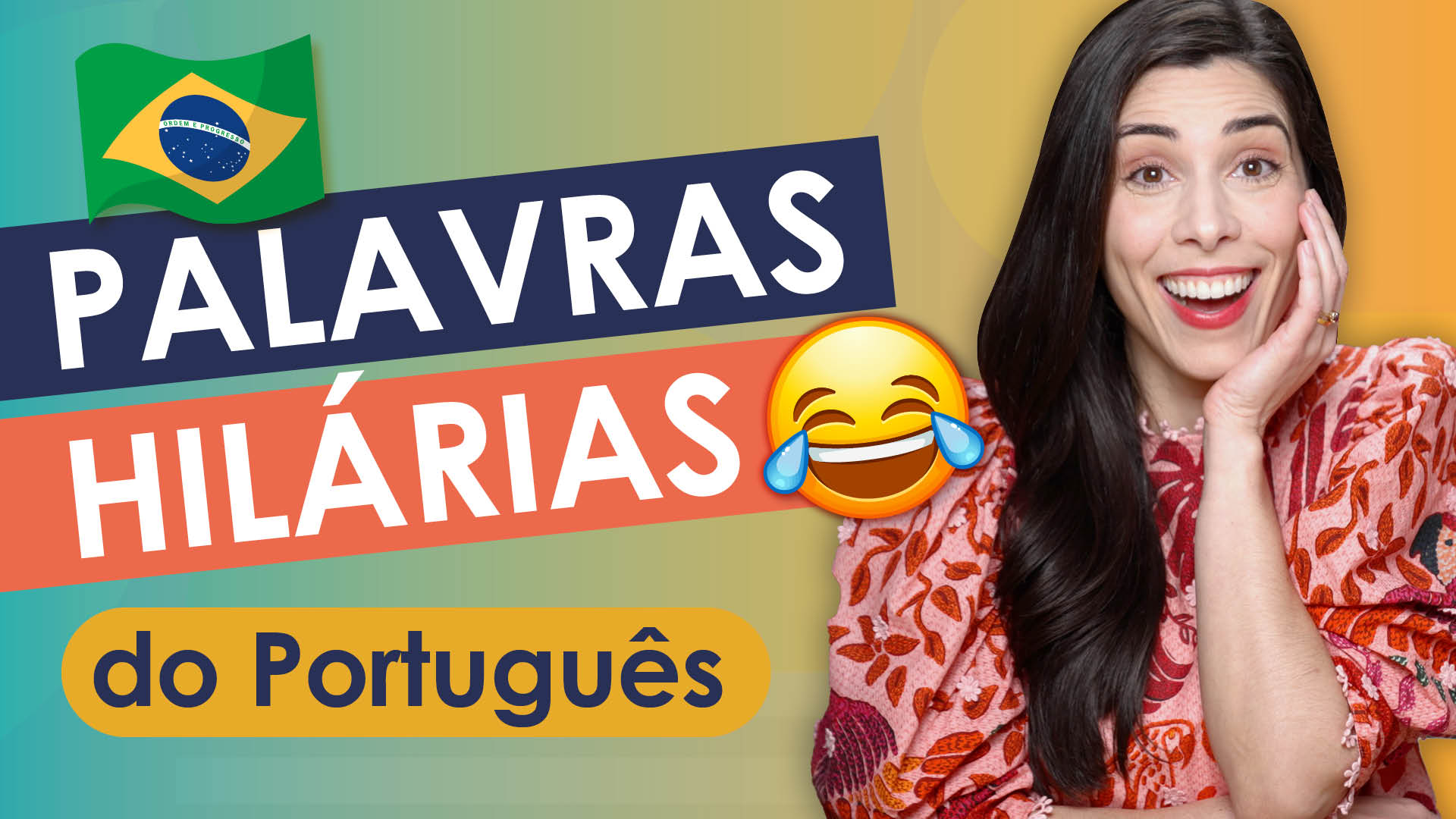*Read translation into English at the end 🙂
Transcription of the video:
Andando de metrô em NY
Oi pessoal! Aqui é a Virginia.
Hoje, eu vou levar você comigo para um passeio de metrô do Brooklyn até Manhattan para você aprender vocabulário relacionado a metrô. Vem comigo!
Nós vamos pegar o metrô aqui na Sétima Avenida. Vamos pegar o B ou o Q em direção a Manhattan.
Eu vou usar o meu cartão para entrar, o MetroCard.
Catraca ou roleta:
O nome deste objeto que usamos para entrar ou sair do metrô chama-se catraca ou roleta.
Passagem de metrô ou ticket de metrô:
No Brasil, nós chamaríamos o MetroCard de cartão de metrô, mas lá é mais comum chamarmos de passagem ou ticket de metrô. Passagem de metrô ou ticket de metrô.
Estação de metrô:
Eu estou aqui, dentro da estação da Sétima Avenida. Nós chamamos esse lugar onde nós pegamos o metrô de estação de metrô.
Pegar o metrô / tomar o metrô:
Você pode usar dois verbos para falar “pegar um transporte”: “pegar um transporte” ou “tomar um transporte”.
Então, você pode dizer: pegar o metrô, tomar o metrô, pegar o ônibus, tomar o ônibus.
Condutor / passageiros:
A pessoa que conduz o metrô chama-se “condutor” e os demais chamam-se “passageiros”.
Vagões:
Um metrô tem vários vagões. Todos esses carros conectados uns aos outros são chamados de “vagões”.
Eu sempre prefiro entrar no último vagão ou no primeiro vagão porque geralmente eles são mais vazios.
Entrar e sair:
Com relação ao movimento de entrar e sair do metrô, nós dizemos:
– Entrar NO metrô.
– Sair DO metrô.
Pela ponte / pelo túnel:
Eu gosto muito de pegar este metrô porque tem uma vista linda, dá para ver Manhattan e do outro lado tem a ponte do Brooklyn. Alguns metrôs vão por baixo, pelo túnel, e outros vão por cima, pela ponte. Eu gosto muito desta linha de metrô do B, porque ele vai por cima da ponte.
Pronto! Chegamos em Manhattan!
Eu espero que você tenha gostado do nosso pequeno passeio de metrô. Agora eu estou aqui na frente do Bryant Park.
Eu vou passear um pouco, dar uma olhada na feirinha de Natal. No próximo vídeo, na próxima semana, eu vou mostrar a feirinha de natal para vocês.
Dever de casa:
Agora, eu gostaria de saber: você anda de metrô na sua cidade? Qual transporte você usa normalmente na sua cidade? Deixe um comentário abaixo.
E se você gostou deste vídeo, lembre-se de dar um likeneste vídeo e de se inscrever em meu canal. Todas as semanas, eu posto um novo vídeo com dicas de gramática, expressões e pronúncia do português brasileiro.
Até a próxima! Tchau, tchau!
Riding the subway in NY
Hi everyone, Virginia here.
Today, I’ll take you with me on a subway ride from Brooklyn to Manhattan so that you learn subway-related vocabulary. Come with me!
- We’ll take the subway here on Seventh Avenue. We’ll take the B or Q towards Manhattan.
I’ll use my card to enter, the MetroCard.
Catraca ou roleta (turnstile):
The name of this object we use to get on or off the subway is called a “catraca” or “roleta” (turnstile).
Passagem de metrô / ticket de metrô (subway pass or subway ticket)
In Brazil, we’d call MetroCard “cartão de metrô”, but over there, it’s more commonly called a “passagem” (pass) or “ticket de metrô” (subway ticket). Subway pass or subway ticket.
Estação de metrô (subway station):
I’m here, inside Seventh Avenue station. We call this place where we take the subway “estação de metrô” (subway station).
Pegar o metrô / tomar o metrô (get the subway / take the subway)
You can use two verbs to say “get a transportation”: “pegar um transporte” (get a transportation) or “tomar um transporte” (take a transportation).
So, you can say: get the subway, take the subway, get the bus, take the bus.
Condutor / passageiros (conductor / passengers):
The person who conducts the subway is called a “condutor” (conductor) and the others are called “passageiros” (passengers).
Vagões (cars):
A subway has several “vagões” (cars). All these cars connected to each other are called “vagões”.
I always prefer to get on the last car or on the first car because they are usually emptier.
Entrar e sair (getting on and off):
Regarding the movement of getting on and off the subway, we say:
– Entrar NO metrô. (Get on the subway.)
– Sair DO metrô. (Get off the subway.)
Pela ponte / pelo túnel (over the bridge / through the tunnel):
I really like to take this subway because it has a beautiful view, you can see Manhattan and on the other side there is the Brooklyn Bridge. Some subways go down, through the tunnel, and others go over the bridge. I really like this subway line, the B, because it goes over the bridge.
That’s it! We’ve got to Manhattan!
I hope you enjoyed our little subway ride. Now I’m here in front of Bryant Park.
I’m going to walk a little, take a look at the Christmas market. In the next video, next week, I’ll show you the Christmas market.
Homework:
Now, I would like to know: do you ride the subway in your city? What transportation do you normally use in your city? Leave a comment below.
Andif you liked this video, remember to give it a thumbs up and subscribe to my channel!Every week, I post a new video with tips on grammar, expressions and pronunciation of Brazilian Portuguese.
See you next time! Bye-bye!


